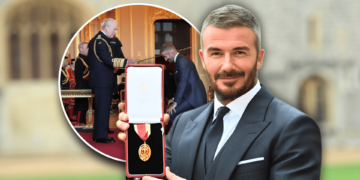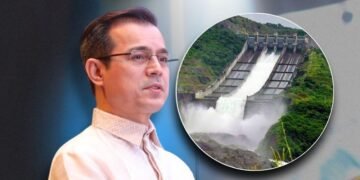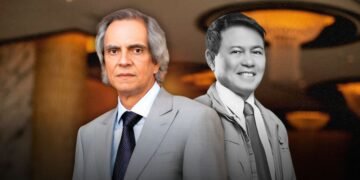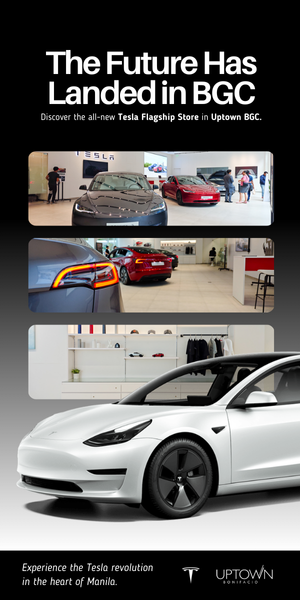Before he was the richest man in the Philippines, before he ran for president, before he became a real estate tycoon — Manny Villar was a barefoot kid selling shrimp and fish with his mother in Divisoria.
Born in Tondo, Manila, one of the most densely populated and impoverished areas in the country, Manuel Bamba Villar Jr. knew early on that if he wanted a different life, he’d have to build it himself.
The son of a Navy man and a seafood vendor, Villar helped his mother sell at the wet market, waking up before sunrise and hauling buckets through the city’s chaotic streets. It was his first exposure to entrepreneurship — and survival.
It wouldn’t be his last.
From Hustling to UP Diliman
Despite the daily grind, Villar prioritized education. He studied at the University of the Philippines Diliman, earning a degree in Business Administration and later, a master’s in the same field. While attending classes, he continued selling shrimp — not out of passion, but necessity.
That combination of business theory and on-the-ground hustle would define the rest of his life.
After passing the CPA board exams, Villar briefly worked at the Bureau of Internal Revenue. But government work didn’t feed his ambition. He left to start a small business delivering gravel and sand to construction sites. That’s where he found his true calling: building things.
And he didn’t stop.
Camella Was Built From a Borrowed Truck and ₱10,000
In 1975, with just ₱10,000 in capital and a single borrowed truck, Villar launched Camella Homes. His goal was simple but revolutionary: provide quality, affordable housing to working Filipinos and overseas workers who were sending money home but had few investment options.
He targeted the mass market, not the elite. While traditional developers built high-end subdivisions, Villar focused on volume, speed, and accessibility. He offered flexible payment terms, understood the psyche of the Filipino breadwinner, and marketed homes as a family legacy.
The gamble worked. Camella exploded in growth. By the late ’90s, it was one of the most recognized names in Philippine real estate.
“I built homes not for the rich, but for the Filipino dreamer,” Villar once said.
Vista Land, AllHome, and the Rise of an Ecosystem
Camella became the foundation for what would eventually become Vista Land & Lifescapes, a real estate powerhouse. Villar expanded horizontally and vertically, adding retail, malls, supermarkets, coffee shops, and lifestyle brands that fed off the very communities his company had built.
Vista Malls, Starmalls, AllHome, Coffee Project, AllDay Supermarket — these weren’t just businesses. They were strategic add-ons designed to keep revenue circulating inside Villar’s ecosystem.
Today, Vista Land has developed over 500,000 homes in 147 cities and municipalities across the Philippines, making it the largest integrated real estate developer in the country.
According to Forbes, Villar’s estimated net worth in 2024 is $17.2 billion, making him the richest man in the Philippines.
He Didn’t Just Build Businesses. He Played the Game of Power.
In the early 2000s, Villar entered politics — and didn’t just participate, he dominated.
He served as Speaker of the House, Senate President, and became the first post-EDSA legislator to hold both top positions in Congress. In 2010, he ran for president under the platform “Sipag at Tiyaga,” directly referencing his origin story.
His political career wasn’t just about policy. It gave him national exposure, regulatory insight, and influence — all of which fed back into his businesses. Critics called it self-serving. Supporters called it visionary.
Either way, it worked.
Why Manny Villar’s Story Hits Different
Manny Villar didn’t come from old money. He didn’t inherit land. He didn’t marry into a dynasty.
He sold seafood. He built homes. He changed how Filipinos viewed property — not just as shelter, but as social mobility. His companies serve the same market he came from. His rise is proof that vision, when paired with grit and timing, can change not just a life, but a country.
In a nation where so many still struggle to move from renter to owner, Manny Villar didn’t just sell homes — he sold hope.
Villar’s story is a uniquely Filipino blueprint for success. It’s not polished or inherited. It’s sweaty, slow, and brutal — and that’s what makes it powerful.
A Symbol of Hope and Hard Work
He used the same instincts he had as a boy in Tondo to scale a billion-peso empire. He understood that if you build for the masses, the market will always be there. He didn’t build skyscrapers to impress elites.
He built suburbs for dreamers, supermarkets for busy moms, coffee shops for couples trying to save on dates. And he connected them all with intentional design.
This wasn’t an accident. It was a system — and he built it brick by brick
There are billionaires who inherited their status. There are politicians who rose through favors. Then there’s Manny Villar — who came from the slums of Tondo and carved out one of the most powerful business empires in Southeast Asia.
He didn’t just change his life. He changed the economic map of the Philippines.
Not bad for a kid who started with a bucket of shrimp.












